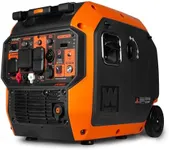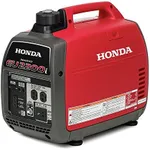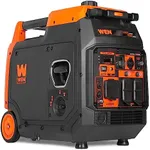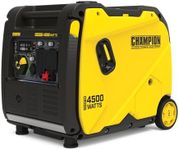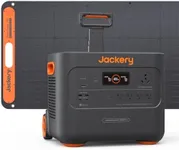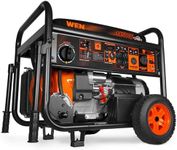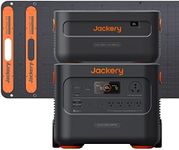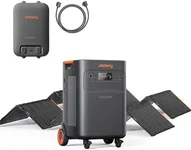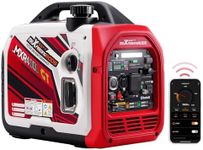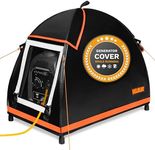Buying Guide for the Best Inverter Generators
Inverter generators are a great choice for providing portable power, especially when you need a reliable and clean energy source for sensitive electronics. They are quieter, more fuel-efficient, and produce cleaner power compared to conventional generators. When choosing an inverter generator, it's important to consider several key specifications to ensure you get the best fit for your needs. Here are the main specs to look at and how to navigate them.Power Output (Wattage)Power output, measured in watts, indicates how much electricity the generator can produce. This is crucial because it determines what and how many devices you can run simultaneously. Generators typically have two wattage ratings: starting watts (surge watts) and running watts. Starting watts are higher and account for the initial power surge needed to start a device, while running watts are the continuous power the generator can supply. For light use, such as charging phones and running small appliances, a generator with 1000-2000 running watts may suffice. For more demanding needs, like running multiple appliances or power tools, look for generators with 3000-4000 running watts or more. Assess your power needs by listing the devices you plan to use and their wattage requirements.
Fuel Type and CapacityInverter generators typically run on gasoline, but some models can also use propane or even diesel. The fuel type affects the generator's runtime, convenience, and fuel availability. Gasoline is widely available and easy to use, but it has a shorter shelf life. Propane is cleaner and has a longer shelf life, but it requires a separate tank. Diesel is efficient and has a longer shelf life, but diesel generators are usually larger and noisier. Fuel capacity, measured in gallons or liters, determines how long the generator can run before needing a refill. Larger tanks mean longer runtimes but also add to the generator's weight. Choose a fuel type and capacity based on your usage patterns and availability of fuel.
Noise LevelNoise level, measured in decibels (dB), indicates how loud the generator will be during operation. This is important if you plan to use the generator in residential areas, campsites, or other noise-sensitive environments. Inverter generators are generally quieter than conventional generators, with noise levels ranging from 50 to 60 dB at a 25% load, which is comparable to normal conversation. For the quietest operation, look for models with noise levels below 60 dB. Consider where and when you'll be using the generator to determine how important noise level is for you.
PortabilityPortability refers to how easy it is to move and transport the generator. This is influenced by the generator's weight, size, and design features like handles and wheels. Lightweight models (under 50 pounds) are easier to carry and ideal for camping or tailgating. Heavier models (over 100 pounds) may require wheels and handles for easier maneuverability and are better suited for home backup power. Consider how often you'll need to move the generator and choose a model that balances power output with portability.
RuntimeRuntime indicates how long the generator can operate on a full tank of fuel at a specified load, usually 25% or 50%. This is important for planning how often you'll need to refuel during extended use. Longer runtimes mean less frequent refueling, which is convenient during power outages or outdoor activities. For occasional use, a generator with a 6-8 hour runtime at 50% load may be sufficient. For extended use, look for models with 10-12 hours or more. Match the runtime to your expected usage duration to ensure continuous power supply.
THD (Total Harmonic Distortion)THD measures the quality of the electricity produced by the generator. Lower THD means cleaner power, which is crucial for sensitive electronics like laptops, smartphones, and medical devices. Inverter generators typically have THD levels below 3%, making them safe for all electronics. Higher THD levels can cause damage to sensitive devices over time. If you plan to power sensitive electronics, choose a generator with a THD of 3% or lower to ensure safe and reliable operation.

